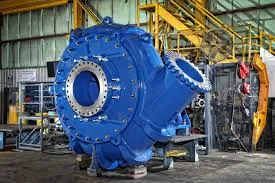English
- Afrikaans
- Albanian
- Amharic
- Arabic
- Armenian
- Azerbaijani
- Basque
- Belarusian
- Bengali
- Bosnian
- Bulgarian
- Catalan
- Cebuano
- Corsican
- Croatian
- Czech
- Danish
- Dutch
- English
- Esperanto
- Estonian
- Finnish
- French
- Frisian
- Galician
- Georgian
- German
- Greek
- Gujarati
- Haitian Creole
- hausa
- hawaiian
- Hebrew
- Hindi
- Miao
- Hungarian
- Icelandic
- igbo
- Indonesian
- irish
- Italian
- Japanese
- Javanese
- Kannada
- kazakh
- Khmer
- Rwandese
- Korean
- Kurdish
- Kyrgyz
- Lao
- Latin
- Latvian
- Lithuanian
- Luxembourgish
- Macedonian
- Malgashi
- Malay
- Malayalam
- Maltese
- Maori
- Marathi
- Mongolian
- Myanmar
- Nepali
- Norwegian
- Norwegian
- Occitan
- Pashto
- Persian
- Polish
- Portuguese
- Punjabi
- Romanian
- Russian
- Samoan
- Scottish Gaelic
- Serbian
- Sesotho
- Shona
- Sindhi
- Sinhala
- Slovak
- Slovenian
- Somali
- Spanish
- Sundanese
- Swahili
- Swedish
- Tagalog
- Tajik
- Tamil
- Tatar
- Telugu
- Thai
- Turkish
- Turkmen
- Ukrainian
- Urdu
- Uighur
- Uzbek
- Vietnamese
- Welsh
- Bantu
- Yiddish
- Yoruba
- Zulu
Telephone: +86 13120555503
Email: frank@cypump.com
Dec . 23, 2024 03:14 Back to list
Self-Priming Effluent Pump for Efficient Wastewater Management Solutions
Self-Priming Effluent Pumps An Overview
Effluent pumps play a crucial role in managing wastewater and are vital in various applications, from residential sewage systems to industrial wastewater treatment facilities. Among the different types of effluent pumps, self-priming effluent pumps stand out due to their unique functionality and efficiency. This article delves into the features, advantages, and applications of self-priming effluent pumps, highlighting their significance in modern plumbing and wastewater management.
What is a Self-Priming Effluent Pump?
A self-priming effluent pump is designed to automatically remove air from the system and establish a prime with minimal manual intervention. Unlike standard pumps that require priming before they can operate effectively, self-priming pumps are engineered to handle air and solids while starting dry. This characteristic makes them incredibly useful in scenarios where the pump can become air-locked or in situations where the fluid level fluctuates frequently.
The operation of a self-priming effluent pump typically involves a unique impeller design that creates a vacuum. When the pump is activated, it draws fluid into the pump casing and expels any air, ensuring that water can flow seamlessly. This continuous cycle enables the pump to maintain operation even if the fluid source temporarily runs dry or becomes interrupted.
Advantages of Self-Priming Effluent Pumps
1. Ease of Use The most significant advantage of self-priming effluent pumps is their user-friendly operation. Since they do not require priming before the first use, they save time and labor, particularly in emergency situations where speed is essential.
2. Versatility These pumps can handle a variety of fluids, including those with solid particles, making them suitable for effluent from sinks, showers, and washing machines. This versatility allows them to be employed in different environments, such as residential, commercial, and industrial.
3. Reduced Maintenance The self-priming ability reduces the risk of pump failure due to air entrapment, thereby minimizing maintenance needs. Users can rely on them for consistent performance without frequent checks.
self priming effluent pump

4. Cost-Effectiveness Although the initial investment in a self-priming effluent pump may be higher than a standard pump, the savings achieved through reduced maintenance and efficient operation often outweigh the initial costs. Additionally, their longevity contributes to overall cost savings over time.
5. Enhanced Performance These pumps often operate more efficiently, handling a range of flow rates and head pressures without requiring manual adjustment. This enhances their effectiveness in various applications, ensuring that wastewater is managed efficiently.
Applications of Self-Priming Effluent Pumps
Self-priming effluent pumps are applicable in numerous settings
- Residential Wastewater Management They are commonly used in home sewage systems, particularly in basements or locations below the municipal sewer line, where gravity alone cannot effectively transport wastewater. - Commercial Buildings Office complexes, shopping malls, and restaurants often require efficient wastewater disposal systems, where self-priming pumps can facilitate quick and reliable water removal.
- Construction Sites During building projects, these pumps are essential for dewatering excavations or managing site runoff, ensuring safe and dry working conditions.
- Agricultural Operations In farms and dairies, self-priming pumps can efficiently handle waste management and irrigation systems, contributing to environmentally friendly farming practices.
Conclusion
Self-priming effluent pumps are a vital component in effective wastewater management systems across various sectors. Their ability to function without the need for manual priming makes them a preferred choice for many installations, allowing for reliability and efficiency. With their growing recognition in both residential and commercial applications, self-priming effluent pumps continue to evolve, integrating advanced technology to meet the increasing demands of modern wastewater management. Investing in these pumps not only simplifies the logistics of wastewater disposal but also contributes to more sustainable practices in water management.
-
Horizontal Split Case Pump with GPT-4 Turbo | High Efficiency
NewsAug.01,2025
-
ISG Series Pipeline Pump - Chi Yuan Pumps | High Efficiency, Durable Design
NewsAug.01,2025
-
Advanced Flue Gas Desulfurization Pump with GPT-4 Turbo | Durable & Efficient
NewsJul.31,2025
-
ISG Series Vertical Pipeline Pump - Chi Yuan Pumps | Advanced Hydraulic Design&Durable Construction
NewsJul.31,2025
-
ISG Series Vertical Pipeline Pump - Chi Yuan Pumps | Energy Efficient & Low Noise
NewsJul.31,2025
-
pipeline pump - Chi Yuan Pumps Co., LTD.|High Efficiency&Low Noise
NewsJul.31,2025










